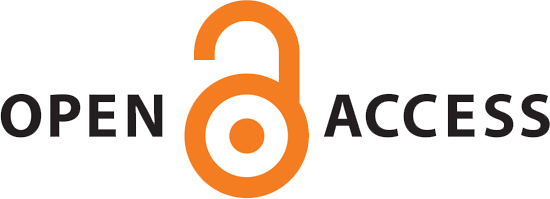Prevalence and Clinical Characteristics of Scabies among Patients in Eastern Iran: A Study in Gonabad City, 2024
Abstract
Background: Scabies, caused by Sarcoptes scabiei, is common in Iran; however, epidemiological data from Gonabad City are scarce. Therefore, this study was conducted to determine the prevalence of scabies in patients referred to the dermatology clinic of Allameh Bohlool Gonabadi Hospital in Gonabad City and to investigate its associated risk factors.
Methods: A cross-sectional analysis was conducted in 2024 on 734 patients presenting with pruritic eruptions and itchy rashes. The diagnosis of scabies was confirmed in 98 patients by identifying S. scabiei mites, eggs, or fecal pellets through light microscopic examination of skin scrapings. Data from these confirmed cases were analyzed using SPSS v.25 to describe their characteristics.
Results: Among the 734 patients screened, 98 were confirmed to have scabies (13.4%). Analysis of these 98 cases revealed that the majority were female (64.3%, 63/98). The highest frequency of cases was observed in individuals aged 16 years and younger. Assessment of clinical presentation revealed that 55.1% (54/98) of cases presented with moderate lesions. A high proportion of cases were also among women, people with low levels of education and unemployed people.
Conclusion: This study identified a total of 98 scabies cases among 734 patients screened in Gonabad City. The infestation was significantly associated with being female, having a lower level of education, and unemployment. These findings highlight a distinct epidemiological pattern of scabies in this underserved region and underscore the need for targeted community screening and health education, particularly among the affected demographic groups. Further analytical studies are needed to confirm true risk factors at the population level.
2. Seyedi Arani HR, Dehghani R, Ghannaee Arani M, Zarghi I (2016) Scabies con-tamination status in Iran: A review. Epi-demiol Health System J. 3(1): 86–94.
3. Dupuy A, Dehen L, Bourrat E, Lacroix C, Benderdouche M, Dubertret L, Morel P, Feuilhade M, Petit A (2017) Accuracy of standard dermoscopy for diagnosing sca¬bies. J Am Acad Dermatol. 56(1): 53–62.
4. Chosidow O (2000) Scabies and pediculo-sis. Lancet. 355(9206): 819–826.
5. Arlian LG (1989) Biology, host relations, and epidemiology of Sarcoptes scabiei. Annu Rev Entomol. 34: 139–161.
6. Khoobdel M, Azari-Hamidian S, Hanafi-Bojd AA, Bakhshi H, Jafari A, Moradi M (2022) Scabies as a neglected tropical disease in Iran: A systematic review with meta-analysis, during 2000–2022. J Ar¬thropod Borne Dis. 16(3): 180–195.
7. Romani L, Steer AC, Whitfeld MJ, Kaldor JM (2015) Prevalence of scabies and im-petigo worldwide: a systematic re¬view. Lancet Infect Dis. 15(8): 960–967.
8. Khoobdel M, Tavana AM, Vatandoost H, Abaei M (2008) Arthropod borne dis-eas¬es in imposed war during 1980–88. J Ar¬thropod-Borne Dis. 2(1): 28–36.
9. Rahbari S, Nabian S, Bahonar A (2009) Some observations on sheep sarcoptic mange in Tehran Province, Iran. Trop Anim Health Prod. 41: 397–401.
10. Jamshidi S, Maazi N, Ranjbar-Bahadori S, Rezaei M, Morakabsaz P, Hosseininejad M (2012) A survey of ectoparasite infes-tation in dogs in Tehran, Iran. Rev Bras Parasitol Vet. 21: 326–329.
11. Sajjadi SA, Atarodi Z, Lotfi AH, Zarei A (2018) Levels of particulate matters in air of the Gonabad city, Iran. MethodsX. 5: 1534–1539.
12. Rasti S, Nazeri M, Kaveh E, Talaee R, Mousavi SGA (2017) Frequency and clin¬ical manifestations of Scabies in sus-pected patients referred to health centers of Kashan, Central Iran (2010–2014). Zahedan J Res Med Sci. 19(2): e7034.
13. Rasekh H, Mozaffari R (2025) Preva¬lence of Scabies and its diagnostic meth¬ods in dermatological centers of Kabul City. J Nat Sci Kabul Univ. 7(4): 1–20.
14. Kouotou EA, Nansseu JR, Kouawa MK, Zoung-Kanyi Bissek AC (2016) Preva-lence and drivers of human scabies among children and adolescents living and stud¬y¬ing in Cameroonian boarding schools. Parasit Vectors. 9(1): 400.
15. Mason DS, Marks M, Sokana O, Solomon AW, Mabey DC, Romani L, Kaldor J, Steer AC, Engelman D (2016) The prev-alence of Scabies and impetigo in the Sol¬omon Islands: A population-based sur¬vey. PLoS Negl Trop Dis. 10(6): e0004803.
16. Sarkar M (2013) Personal hygiene among primary school children living in a slum of Kolkata, India. J Prev Med Hyg. 54 (3): 153–158.
17. Sanei-Dehkordi A, Soleimani-Ahmadi M, Zare M, Jaberhashemi SA (2021) Risk factors associated with scabies infesta-tion among primary schoolchildren in a low socio-economic area in southeast of Iran. BMC Pediatr. 21(1): 2–10.
18. Azene AG, Aragaw AM, Wassie GT (2020) Prevalence and associated factors of sca¬bies in Ethiopia: systematic review and Meta-analysis. BMC Infect Dis. 20: 1–10.
19. van der Linden N, van Gool K, Gardner K, Dickinson H, Agostino J, Regan DG, Dowden M, Viney R (2019) A system-atic review of scabies transmission mod-els and data to evaluate the cost-effec-tiveness of scabies interventions. PLoS Negl Trop Dis. 13(3): e0007182.
20. Fernando DD, Mounsey KE, Bernigaud C, Surve N, Estrada Chávez GE, Hay RJ, Currie BJ, Chosidow O, Fischer K (2024) Scabies. Nat Rev Dis Primers. 10 (1): 1–20.
21. Knapp AP, Rehmus W, Chang AY (2020) Skin diseases in displaced populations: a review of contributing factors, chal¬leng-es and approaches to care. Int J Derma-tol. 59(11): 1299–1311.
22. Louka C, Logothetis E, Engelman D, Samiotaki-Logotheti E, Pournaras S, Stienstra Y (2022) Scabies epidemiolo¬gy in health care centers for refugees and asylum seekers in Greece. PLoS Negl Trop Dis. 16(6): e0010153.
23. Sunderkötter C, Wohlrab J, Hamm H (2021) Scabies: epidemiology, diagnosis and treat¬ment. Dtsch Arztebl Int. 118(41): 695–704.
24. Arlian LG, Morgan MS (2017) A review of S. scabiei: past, present and future. Para¬sit Vectors. 10: 1–22.
| Files | ||
| Issue | Vol 19 No 2 (2025) | |
| Section | Original Article | |
| Keywords | ||
| Scabies; Sarcoptes scabiei; Socioeconomic factors; Gender; Iran | ||
| Rights and permissions | |

|
This work is licensed under a Creative Commons Attribution-NonCommercial 4.0 International License. |




